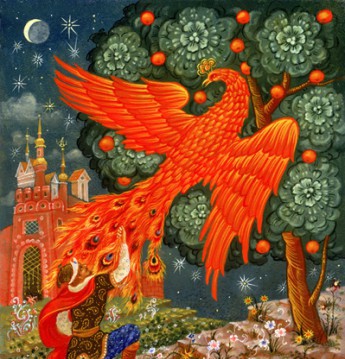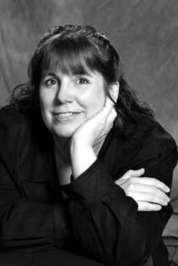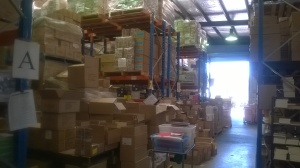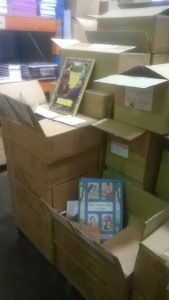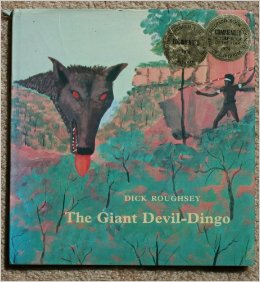 Today I am interviewing well-known authors Bem Le Hunte and Sue Woolfe, who are two of the founding partners in a new author-centred publishing enterprise, Wuthering Ink, which after several years of hard work, was launched in Sydney recently.
Today I am interviewing well-known authors Bem Le Hunte and Sue Woolfe, who are two of the founding partners in a new author-centred publishing enterprise, Wuthering Ink, which after several years of hard work, was launched in Sydney recently.
First of all, Bem and Sue, congratulations on the recent launch of Wuthering Ink! It’s been a massive undertaking, I know. Can you tell us about how it all started?
It all started on a balcony in Sydney where we gathered one candlelit evening – a group of writers with unchecked revolutionary tendencies – all good at inventing worlds and thinking differently about possibilities. We were writers of novels, plays, poetry and children’s books, but on this occasion we gathered to write a manifesto…
I imagine it must have been quite a steep learning curve for you! What were the challenges you faced during the set-up? And what discoveries did you make along the way?
(BEM) In my other life I run a world-first, transdisciplinary, future-facing degree called the Bachelor of Creative Intelligence and Innovation at UTS – where students meet the challenges of a fully disrupted, open, complex, dynamic networked society, responding with creative interventions in a constantly evolving innovation ecosystem. (Phew, that sounded long-winded!)
Anyway, one of the things we do is human-centred design, and then human-centred everything – that is, everything beyond design. In publishing that means an author-centric vision of what’s possible. It occurred to us that this had never been done before, and yet we were at a threshold moment when we could re-invent the system. The new, transformed digital publishing environment gave us that opportunity to create a portal that really put the writer at the centre of the deal, not at the end of a long system that allots a slot on a September list for your ‘title.’
So you can see, this is a re-vision of what publishing could be, from an author’s perspective. The only problem was that the world was already organising too-fast around the new intermediaries – giants like Amazon, who presented a new system for authors to slot into, on what is often described as a ‘long tail’ model of publishing. (The long tail is the million plus self-published authors selling no more than a hundred dollars worth of books, but still making money for Amazon.)
The only problem was to create a partnership with a company that could build us the portal – the back-end. For that, I approached Macmillan Publishing Solutions, in India, who have been incredibly supportive over this period of time. Not only did they understand our vision, they interpreted it through clever technology. For example, we didn’t want to just dump books on our site and leave them there to rot. We wanted to give authors the option to upload videos. And we wanted to be able to promote books to Wuthering Ink readers, which we will be doing through a regular newsletter. And we wanted to make it easy for authors to upload their books and liberate their backlists. Macmillan Publishing Solutions have helped Wuthering Ink to do all this and more.
Can you explain exactly what Wuthering Ink can do for authors? What can people expect if they sign up with you? And what are your criteria–if any–for works featured on Wuthering Ink?
*Higher royalties – 80% on your book. (When we began we rather cheekily called ourselves ‘The Royalties’ for this very reason.)
*A chance to be published in perpetuity – and possibly the chance to earn a living from your work, over time.
*A ‘book in a bag’ service, which allows authors with backlisted titles to easily and cheaply convert their titles through Macmillan Publishing Solutions in India.
*A truly international market with no barriers to overseas publication. (We know we’re as good as the best of American and British writers, but here’s a chance to prove it with sales!)
*The ability to publish outside the strictly commercial demands of traditional publishing. (A chance to experiment and take risks – the thrill of any creative practice.)
*More control over the production and promotion of work. (Long past the time allocated by publicists in publishing houses.)
How do you feel Wuthering Ink differs from similar services such as, for instance, the ASA’s Authors Unlimited?
We offer higher royalties than Amazon, and more generally an exclusive list of published authors – writers who all bring their readers with them. We also offer authors the ability to promote their work directly to readers who sign up for our regular newsletters. Traditional publishers, or even digital intermediaries, rarely allow this type of direct contact between writers and readers as it undermines their role and financial advantage in holding the ‘list’ of buyers. Our goal is to make the contact between readers and writers far more fluid and enriching for writers and readers. What we’re after is intimacy, and we need a community for this, which is why we are so keen to talk to other people in the community of readers – including your readers, Sophie!
Having said all this, we’re not exclusive. Wuthering Ink authors can have their book on any number of sites. We believe that this type of promiscuity promotes a thriving publishing ecosystem!
What have the reactions of authors been so far? And have you had any comments from publishers too?
(SUE) Tom Keneally said it was “a grand concept”. Stephen Sewell said ‘we’re changing the world, one book at a time”. Our family of authors, who we’ve tested it all out on, who’ve been patiently waiting for our launch, sometimes for years – are delighted.
(BEM) I’ve had so many writers thank Sue and I for creating Wuthering Ink – especially since the launch. Time will tell how their responses develop – we’re still so new. I’d be very interested in what your readers think of it, and would really encourage them to get on board, test it out and join our push to transform the world of publishing!
What are you hoping Wuthering Ink might do, in the short and long term, for Australian authors and Australian literature?
Well it’s a world first and it’s an Australian innovation, so Aussie writers are well-placed to benefit from this social enterprise from the word go. However, we’re hoping it will begin a worldwide phenomenon. If Wuthering Ink can help publish the work of established authors around the world – of every ilk – we’d love that. So if there’s a biography of a Tuareg Chief, a philosophy book that will help us understand how to survive capitalism, or a book of hand-written poems that have been dug up from the 16th Century, we’d welcome all these additions and more on our site! Please join us – check it out – upload your books and connect with your favourite authors.
